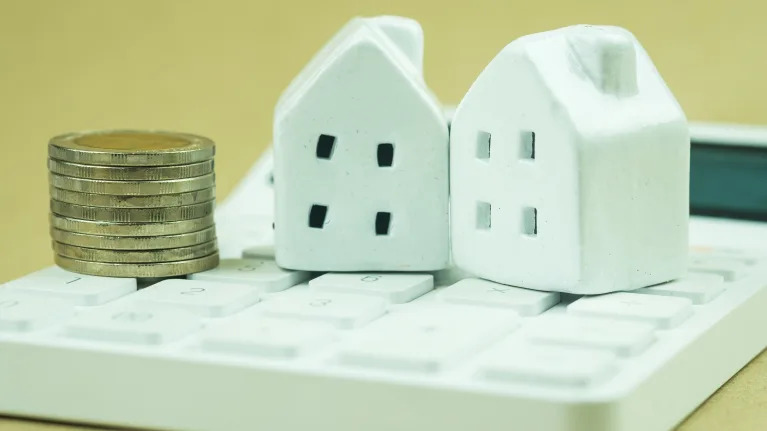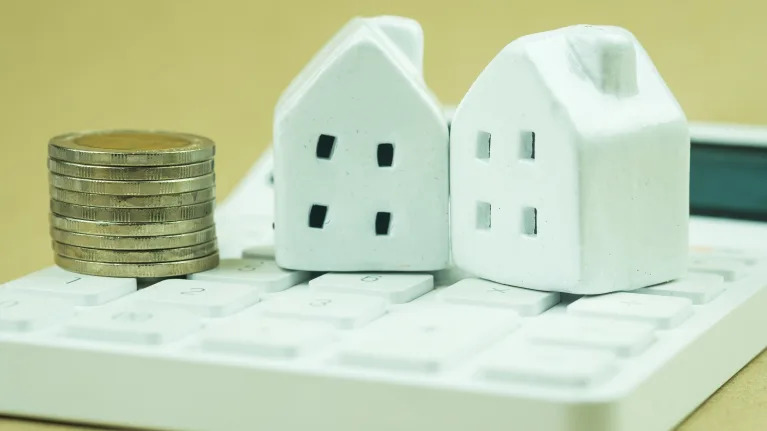
Paying off your mortgage can take a long time — usually decades. In the meantime, it can limit your monthly cash flow, take money away from other investments, and leave you spending hundreds of thousands in interest over the long haul. Fortunately, there are ways to speed up your timeline.
In fact, borrowers can shave years off a mortgage by making biweekly mortgage payments rather than monthly ones. Want to see if this strategy is the right move for your finances? Here’s what you need to know.
Learn more: What percentage of your income should go to a mortgage?
In this article:
Biweekly payments are mortgage payments made every two weeks. Rather than making one larger monthly payment as you traditionally would, you’ll take that payment, split it in two, and make that partial payment every other week.
The strategy results in a full extra monthly payment every year. Because there are 52 weeks in a year, biweekly payments give you 26 half-payments — or 13 full monthly payments — annually. It doesn’t sound like a big deal, but depending on your loan amount, interest rate, and term length, it has the power to cut years off your payoff time and save you thousands in long-term mortgage interest.
A quick note: You’ll have to talk to your loan servicer to do biweekly payments. Not all servicers allow this and, in some cases, they may charge a fee to process the additional payments. You’ll also need to ensure the servicer will apply your payment to the mortgage principal balance as soon as it’s received. Some servicers will hold the payment until your monthly due date and apply them together. This negates the benefits of paying biweekly.
Read more: What is mortgage principal, and how do I pay it off?
The main difference between biweekly and monthly mortgage payments is when you make your payments. With monthly payments, you’ll use the monthly due date set by your mortgage lender and make the payment in full by that time.
With a biweekly payment plan, you’ll make a half-payment every two weeks. Many people align these payments with their paydays if they get paid biweekly. This makes it easier to afford and remember to make the payments. (You can also set up automatic payments if you feel comfortable doing so.)
This payoff strategy also significantly affects your repayment timeline and long-term interest costs. Here’s a look at how monthly versus biweekly payments impact a $300,000, 30-year loan with a 7% mortgage rate.
In the above example, making biweekly payments would mean paying off your loan seven years earlier and paying roughly $100,000 less interest.
Learn more: How much a $300,000 mortgage loan costs
Paying off your loan faster is one big perk of biweekly mortgage payments. This can free up money for other goals, like saving for retirement, investing, or paying for your child’s college tuition. It can also help you build home equity faster and save you lots in long-term interest. (In the example above, you’d save about $117,000.)
Last but not least, biweekly payments can often be easier on your household budget, especially if you get paid every other week.
On the downside, biweekly payments may come with extra processing fees from your lender or a third-party processor if the lender uses one. You’ll actually pay more annually since you’re making 13 payments by the end of the year instead of 12, which might be a stretch on your yearly budget. It also requires more work (unless you set up automatic payments).
Biweekly payments aren’t the only option if you want to pay off your mortgage faster. You can also try the following tactics:
-
Put occasional windfalls toward your loan: If you get a tax refund, holiday bonus, or birthday money, put it toward your loan’s principal. This will reduce your payoff time and long-term interest.
-
Make larger payments: You can also pay down your mortgage faster simply by tacking on an extra $100 for each monthly payment. Just ensure your servicer is applying that extra payment toward your principal mortgage balance, and none of it goes toward interest.
-
Make one extra payment per year: You can shorten your loan term by saving up over the year and making one extra payment.
-
Refinance: By refinancing your home loan into a new one with a shorter term or lower interest rate (or both), you can reduce your interest costs and shave years off your payoff time. But you’ll want to ensure the savings offset the refinancing closing costs.
There are other ways to pay off a mortgage early, so talk to a financial advisor if you’re unsure which is right for you.
Dig deeper: 7 ways to pay off your mortgage faster
That partly depends on the interest rate — but on a 30-year mortgage loan with a 7% interest rate, making your mortgage payments biweekly would allow you to pay off your loan seven years faster than with traditional monthly payments.
It depends on various factors, including the mortgage loan term. With a 30-year mortgage, biweekly payments will shave off around seven years from your repayment schedule. However, that’s assuming you start making biweekly payments from the very beginning — the sooner you start, the more you’ll save in the long run.
The main downside to a biweekly payment schedule is also its greatest strength: It means you are actually paying more toward your mortgage each year. This strategy is great in the long term but could be challenging in the short term if money is already tight. Biweekly payments could also come with extra processing fees.
Both of these repayment strategies can help homeowners pay off loans faster and pay less interest over the life of the loan. The right choice depends on your budget and the terms of your loan. Be sure to run the numbers to determine which works best for you.
Biweekly mortgage payments are generally a good idea. This is one of the strategies for paying off your loan faster that takes the least effort, especially if you set up automatic payments. It’s also a great option if you don’t have the funds to pay extra every month or to put a windfall payment toward your home loan.
This article was edited by Laura Grace Tarpley.
